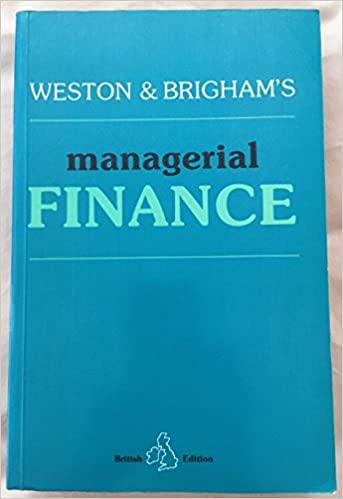Only need D answered
a) Calculate the cost of each capital component, that is, the after-tax cost of debt, the cost of preferred stock, the cost of equity from retained earnings, and the cost of newly issued common stock. Use the DCF method to find the cost of common equity.
b) Now calculate the cost of common equity from retained earnings using the CAPM method.
c) What is the cost of new common stock based on the CAPM ? (Hint: Find the difference between re and rs as determined by the DCF method and add that differential to the CAPM value for rs.)
d) If Sunrise continues to use the same market value capital structure, what is the firms WACC assuming that (1) it uses only retained earnings for equity? (2) If it expands so rapidly that it must issue new common stock?

Here is the condensed 2019 balance sheet for Sunrise Company (in thousands of dollars): 2019 Current assets Net fixed assets $2,000 3,000 $5,000 Total assets $ 900 Accounts payable and accruals Short-term debt Long-term debt Preferred stock (10,000 shares) Common stock (50,000 shares) Retained earnings Total common equity Total liabilities and equity 100 1,100 250 1,300 1,350 $2,650 $5,000 Sunrise's earnings per share last year were $3.20. The common stock sells for $55.00, last year's dividend (Do)was $2.10, and a flotation cost of 10% would be required to sell new common stock. Security analysts are projecting that the common dividend will grow at an annual rate of 9%. Sunrise's preferred stock pays a dividend of $3.30 per share, and its preferred stock sells for $30.00 per share. The firm's before-tax cost of debt is 10%, and its marginal tax rate is 25%. The firm's currently outstanding 10% annual coupon rate, long-term debt sells at par value. The market risk premium is 5%, the risk-free rate is 6%, and Sunrise's beta is 1.516. The firm's total debt, which is the sum of the company's short-term debt and long-term debt, equals $1.2 million. Here is the condensed 2019 balance sheet for Sunrise Company (in thousands of dollars): 2019 Current assets Net fixed assets $2,000 3,000 $5,000 Total assets $ 900 Accounts payable and accruals Short-term debt Long-term debt Preferred stock (10,000 shares) Common stock (50,000 shares) Retained earnings Total common equity Total liabilities and equity 100 1,100 250 1,300 1,350 $2,650 $5,000 Sunrise's earnings per share last year were $3.20. The common stock sells for $55.00, last year's dividend (Do)was $2.10, and a flotation cost of 10% would be required to sell new common stock. Security analysts are projecting that the common dividend will grow at an annual rate of 9%. Sunrise's preferred stock pays a dividend of $3.30 per share, and its preferred stock sells for $30.00 per share. The firm's before-tax cost of debt is 10%, and its marginal tax rate is 25%. The firm's currently outstanding 10% annual coupon rate, long-term debt sells at par value. The market risk premium is 5%, the risk-free rate is 6%, and Sunrise's beta is 1.516. The firm's total debt, which is the sum of the company's short-term debt and long-term debt, equals $1.2 million







